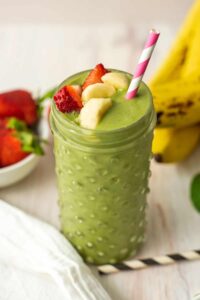Developing Healthy Habits With Less Sugar
go.ncsu.edu/readext?1021095
en Español / em Português
El inglés es el idioma de control de esta página. En la medida en que haya algún conflicto entre la traducción al inglés y la traducción, el inglés prevalece.
Al hacer clic en el enlace de traducción se activa un servicio de traducción gratuito para convertir la página al español. Al igual que con cualquier traducción por Internet, la conversión no es sensible al contexto y puede que no traduzca el texto en su significado original. NC State Extension no garantiza la exactitud del texto traducido. Por favor, tenga en cuenta que algunas aplicaciones y/o servicios pueden no funcionar como se espera cuando se traducen.
Português
Inglês é o idioma de controle desta página. Na medida que haja algum conflito entre o texto original em Inglês e a tradução, o Inglês prevalece.
Ao clicar no link de tradução, um serviço gratuito de tradução será ativado para converter a página para o Português. Como em qualquer tradução pela internet, a conversão não é sensivel ao contexto e pode não ocorrer a tradução para o significado orginal. O serviço de Extensão da Carolina do Norte (NC State Extension) não garante a exatidão do texto traduzido. Por favor, observe que algumas funções ou serviços podem não funcionar como esperado após a tradução.
English
English is the controlling language of this page. To the extent there is any conflict between the English text and the translation, English controls.
Clicking on the translation link activates a free translation service to convert the page to Spanish. As with any Internet translation, the conversion is not context-sensitive and may not translate the text to its original meaning. NC State Extension does not guarantee the accuracy of the translated text. Please note that some applications and/or services may not function as expected when translated.
Collapse ▲Young children have small tummies, but big nutrition needs! Children often eat and drink too many added sugars, which are sugars and sweetening syrups that are added to foods or drinks when they are made. Adults can help by making sure meals and snacks include foods and drinks that are lower in added sugars. This can help children learn to love a variety of flavors, not just what’s sweet.
How Do I Find the Amount of Added Sugars in a Food?
Limit added sugars in your family’s diet as much as possible by choosing foods and drinks that are lower in added sugars. You can find “Added Sugars” on the Nutrition Facts label on the food package. Children ages 2–4 years should get less than 25–35 grams (g) of added sugars per day. One 12-ounce can of soda, lemonade, or fruit drink has up to 60g of added sugars.
Top Sources of Added Sugars for Americans (age 1 and older)*
- Sugar-Sweetened Beverages
- Desserts and Sweet Snacks
- Candy and Sugars
Some foods naturally contain sugars. Examples include milk and fruits. These foods also provide important nutrients, like vitamins and minerals. Low-fat unflavored milk and fruits are part of a healthy eating pattern. These are fine…it is the food with added sugars that are causing the problems!
What About Fruit Juice?
Most of the time, choose whole fruits (cut into thin slices or bite-size pieces to reduce the risk of choking in young children or the elderly) instead of juice. While 100% fruit juice does not contain added sugars, juices lack the fiber that is found in whole or cut-up fruits.
When you drink juice:
- Choose 100% juice.
- Offer a small serving, up to 4-6 fluid ounces (½–¾ cup) per day.
What else can I do to help reduce sugar consumption?
Shop and select foods by being mindful…think every bite counts. This really counts when selecting: cereals, whole grain breads, peanut butter and yogurt. Read the label and compare products to select lower added sugars. Drink water between meals and encourage that with all of your friends and family members. Another lifestyle change is to celebrate successes with non-food items instead of sweets. Some of the best treats in life are spending time together perhaps, playing games, walking outside or going to the library to select a book… share your talents, interest and hobbies with other and listen to theirs! That is life’s sweet spot!
Fruit is naturally sweet and full of vitamins! Strawberries & blueberries are rich in vitamin C, which promotes immune system health. Fruits are a great source of fiber, as well. Yogurt is a great source of calcium, which is important for bone health.
Berry Frozen Yogurt Bark

Yogurt Bark With Berries
- Yogurt bark is Versatile! You can use different fruits, like peaches, bananas, or raspberries. You can also sprinkle the top with cinnamon to add more flavor.
- 2 cups non-fat plain yogurt
- ½ tsp. vanilla extract
- ¼ tsp. lemon juice
- ¼ tsp. salt
- 1 cup strawberries, sliced
- 1 cup blueberries, whole
Directions:
- Line a baking sheet with wax paper and set aside.
- In a large mixing bowl, combine yogurt, vanilla, lemon juice, and salt.
- Pour the yogurt mixture onto the lined baking sheet and spread so that it is an even thickness.
- Add strawberries and blueberries to the top of the yogurt.
- Freeze until firm (roughly 2-3 hours).
- Once frozen, cut the yogurt bark into pieces and enjoy!
Banana Oatmeal Pancakes Serving size: 3 pancakes

Banana Oatmeal Pancakes
This recipe is s delicious alternative to traditional pancakes and a great way to use bananas. The riper the banana, the easier to mash and the more flavor they will give the pancakes! Top with a little peanut butter or chopped nuts if desired. You can double or triple the recipe and freeze extras once cooked. Reheat on the stove or toaster.
- 2 eggs, beaten
- 2 bananas, mashed
- ½ cup of old fashioned rolled oats, uncooked
- ½ teaspoon baking powder
- ¼ teaspoon vanilla extract
- ⅛ teaspoon cinnamon
- ½ teaspoon olive oil
- ½ cup fresh or frozen fruit of your choice (optional)
Directions:
- In a medium bowl, combine eggs, bananas, rolled oats, baking powder, vanilla extract, and cinnamon. Batter should be cohesive and without lumps.
- Heat olive oil in medium skillet on medium-low heat. Once heated, spoon ¼ cup portions of the batter onto skillet and cook until golden brown on both sides (about 4 minutes on each side).
- Heat fruit in small skillet until warm, stirring occasionally. Serve over pancakes. You can also serve pancakes with chopped nuts or peanut butter on top.
Nutrition Facts: (Based on including the optional ½ cup frozen mixed fruit) Calories: 302, Protein: 11 grams, Carbohydrates: 47 grams, Fiber: 6 grams, Fat: 9 grams, Sodium: 198 mg

Fruit Smoothie
Fruit Smoothie Serves 3
The ingredients in this recipe can be varied according to taste and availability. Kale can be substituted for spinach, and any other fruits can be used as well. Using some frozen fruits will help make a cold, refreshing smoothie. Adjust the amount of milk to make it thicker or thinner based upon taste preference.
- ½ cup baby spinach
- 1 tablespoon peanut butter
- ¼ cup walnuts
- ¼ cup almonds
- ½ apple, sliced
- 4–5 frozen peach slices
- 5–6 frozen whole strawberries
- 5–6 medium cubes of mango (fresh or frozen)
- 3 cups plain soymilk
Directions: Combine all ingredients in a blender until a smooth consistency is reached.
Nutrition Facts: (Serving size is 1 ½ cups) Calories: 325 calories, Carbohydrates: 30 grams, Fiber: 5 grams, Protein: 13 grams, Fat: 19 grams, and Sodium: 139 mg.
Sources for this article NC Extension Food and Nutrition, Meds instead of Meds educational program. The research and selection of tested recipes was compiled by Alyssa Letchworth, ECU student intern, For more information about the Foods and Nutrition please contact Louise L. Hinsley, Extension Agent, Family Consumer Science at the Beaufort County Center of N.C. Cooperative Extension, 155 Airport Road, Washington, 252-946-0111.



